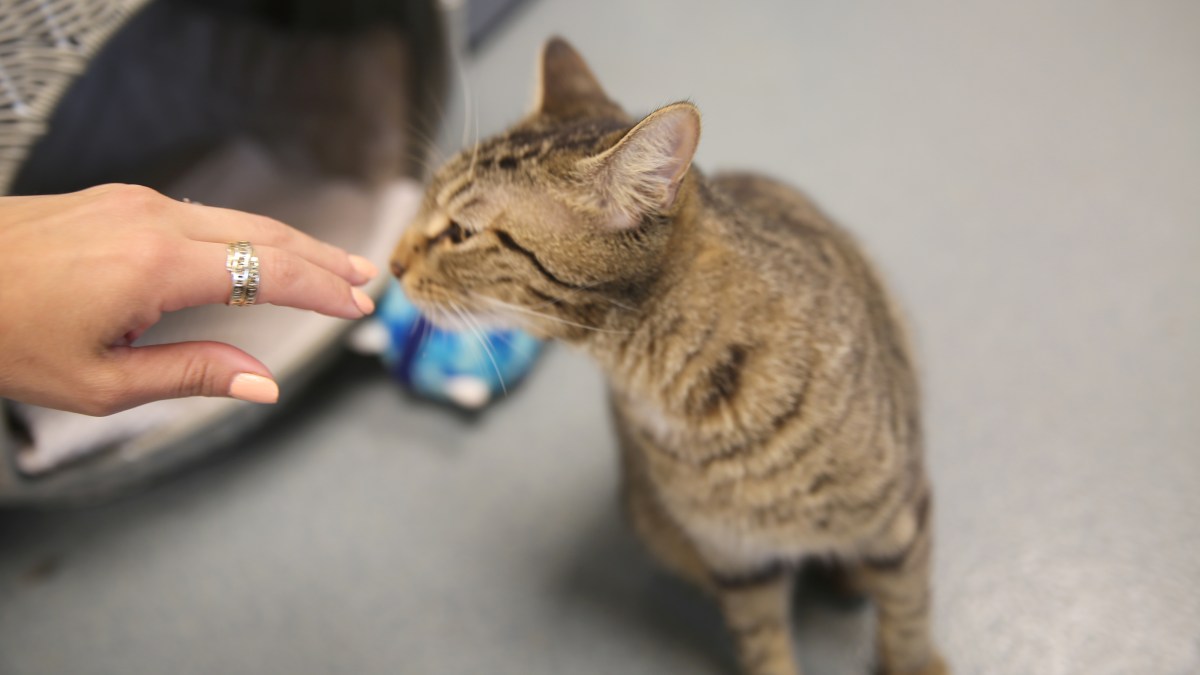Adopting a new pet is an immensely rewarding experience; not only does adoption save lives, pets are also great for the well-being of their owners. But for all the warm cuddles and slobbery kisses, adopting pets comes with its own set of challenges—it's simply a matter of setting expectations and being prepared.

Embracing imperfection
As the saying goes, good things take time, and building a lifelong bond with a new furry friend is no different. Pet parents are often consumed with the initial excitement of bringing a new pet home, but that excitement can fade as a pet experiences the normal challenges of adjusting to a new environment, sometimes leading adopters to return pets to the shelter.
However, the Hill’s Pet Nutrition 2024 State of Shelter Pet Adoption Report showed that 2 out of 3 people who did surrender a pet said intervention, like shelter support or pet food pantries, could have prevented the surrender. Consequently, many shelters and communities are responding with support that focuses on pet retention, however, the best strategy to reducing pet surrenders is through education and awareness: pet parents should approach adoption with knowledge and understanding that there will be bumps in the road. As you welcome a furry friend into your home, remember that your pet is experiencing a big change. And though adopted pets will come with varied backgrounds and temperaments, pet parents can use the handy 3-3-3 rule as a framework to set expectations and work towards realistic goals for a smooth transition: 3 days for adjusting, 3 weeks for training and bonding, and 3 months for routines and socialization.

The First 3 Days: a period of transition
The initial 72 hours in a new home are often the most stressful for a pet. Don’t be dismayed if your pet exhibits signs of anxiety, such as hiding, whimpering, or even refusing to eat. After having adopted three dogs from Peggy Adams Animal Rescue League, vet technician Rafael Valle Del Río knows exactly what to expect: “The first three days after being adopted, an animal is still decompressing. They may not want to eat their food or show signs of being lethargic. And that's just basically him not being used to a new world.” Focus on factors you can control, and the measures you can take to create a sense of comfort for your new pet, like providing a quiet place to sleep and maintaining a consistent, science-led diet. “Keeping any consistency is really good for them,” says Dr. Alyssa Comroe, Director of Veterinary Medicine at Peggy Adams Animal Rescue League, which partners with Hill’s Food, Shelter & Love Program. The initiative provides science-led nutrition to feed pets in more than 900 animal shelters across the U.S. as well as free Adopter Bags to go home with all new dog and cat adopters at partner shelters.“ Every time a pet is adopted from our shelter, they go home with a bag of Hill's food, and we recommend that they continue on that food–let's keep some consistency with leaving a shelter and going to a home, which is so exciting, but it is still a big change.”
3 Day Tip: Stay consistent with the shelter's food and feeding schedule.

The First 3 Weeks: establishing a routine
After the initial transition, pets begin adjusting to their new environment. As your new pet settles in, their personality traits and any training needs will become more apparent. “That's when your pet is starting to learn your routine. They're starting to become part of the family and figuring out what you are about and settling in,” asserts Dr. Comroe. Begin with basic training commands and continue to focus on consistency in feeding times, bathroom breaks, and exercise; the next three weeks are critical for establishing a routine that helps pets feel secure. “Keeping a consistent diet is definitely a big part of the adoption process; keeping the consistency of the food that was being fed at the shelter and going home with it,” says Valle Del Rio. In addition to maintaining a science-led diet like Hill’s Science Diet or Hill's Prescription Diet, you can begin gradually socializing your pet with other family members and pets, along with positive reinforcement to aid in the transition. By the third week, the pet will feel more comfortable and confident, allowing for more focused training and routine building in the coming weeks. Throughout this period, patience, love, and attention are essential to help the pet feel at home and ensure a smooth transition into the family.
3 Week Tip: Habits are taking hold. Establishing a routine is key.

The First 3 Months: feeling at home
By the three-month mark, most pets begin to feel truly at home. Adopters can expect their pet to be more settled and comfortable in their new environment. This newfound comfort allows more time for building trust and understanding each other’s quirks and habits, enabling deeper bonds to form. “Three months, that's when they're a part of your family, and you're going to see their true personality shining through, because that's really who they are,” shares Dr. Comroe. Now that your pet feels safe and comfortable, you can advance their training and expose them to new experiences and environments like car rides or a park excursion where they can interact with other dogs and people. Overall, the adopter can expect a more harmonious and integrated relationship with their pet, marked by trust, affection, and mutual understanding.
3 Month Tip: The bond with your pet emerges now. Continued training and patience will strengthen it.

3 Months and Beyond
Throughout the first three months and beyond, persistence and patience will be rewarded in profound and lasting ways. “You got to focus on the positive, right?” says Valle Del Rio, “because nothing that's great is going to come easy.” With some effort, not only will your pet feel safe, comfortable, and bonded with you as a parent, but you’ll have an integral new family member who offers unconditional love. “All four of my dogs are rescues. Being able to provide them a second chance and a home has been super fulfilling,” said Valle Del Rio. “A shelter animal will love you unconditionally. They have been through many things. They can't speak, but they can definitely give you all of their heart.”


